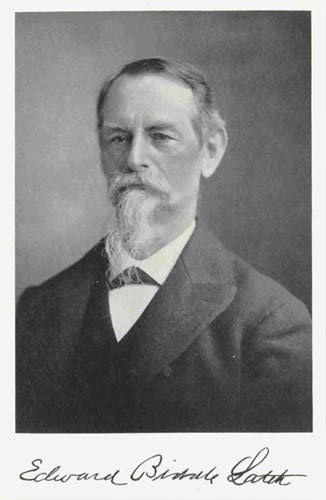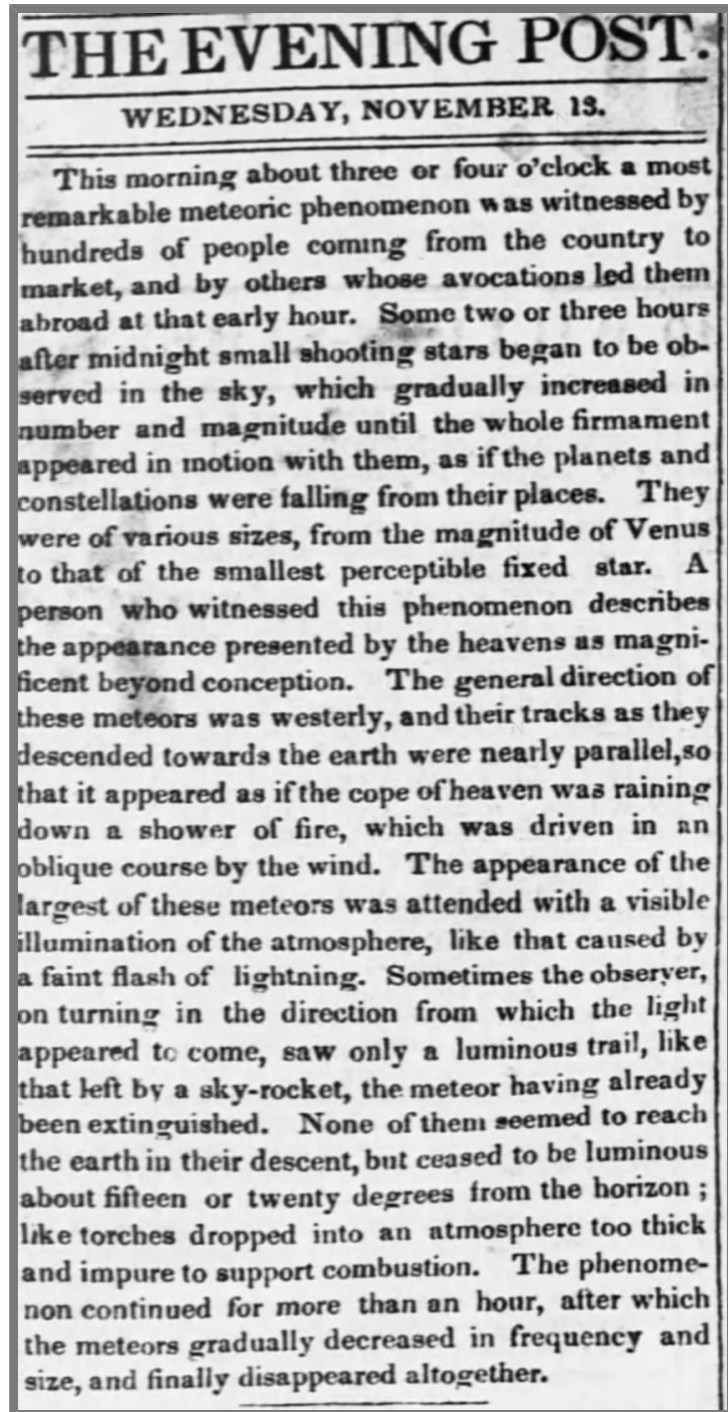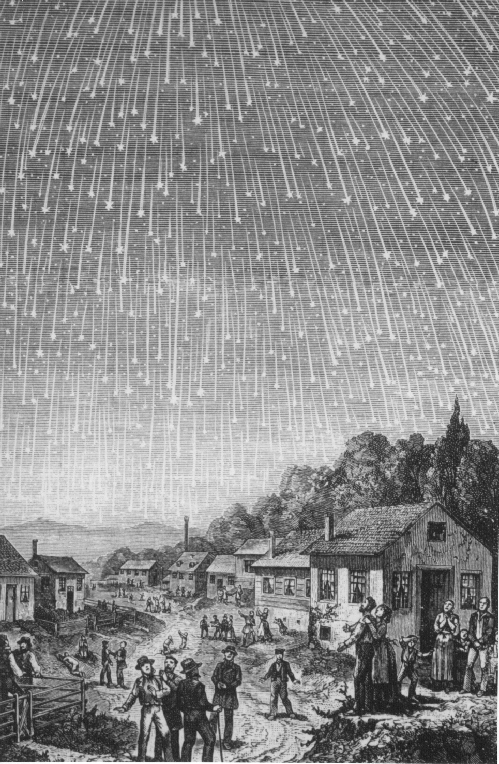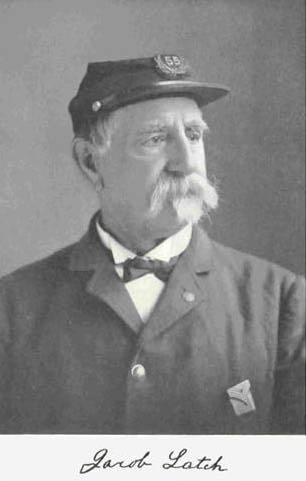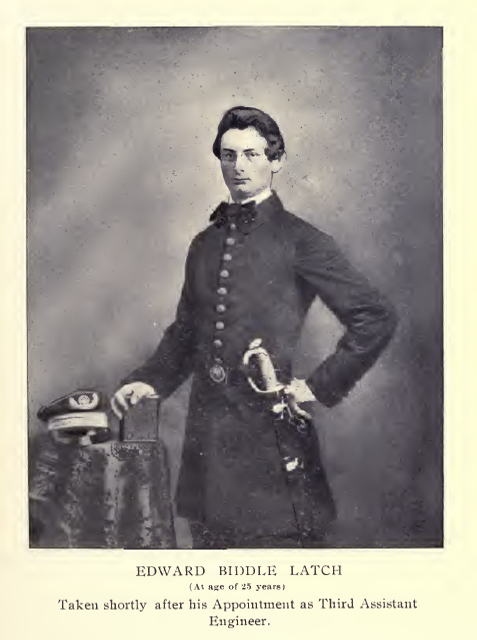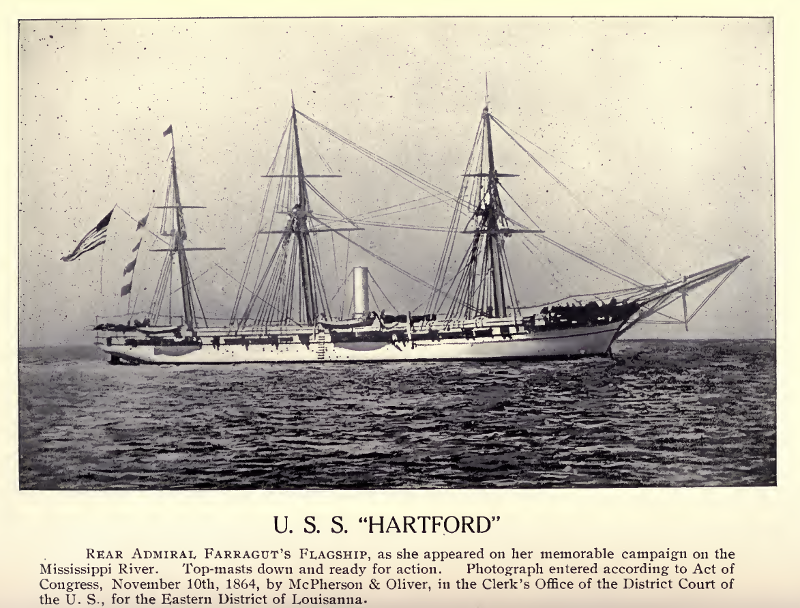|
Mr. Latch originated and developed the Mosaic system of Chronology. He wrote numerous elucidations of the scriptures, and of ancient relics in their relationship to universal history by the Mosaic System of Chronology. He developed the Mosaic laws for determining the distances of the planets from the sun. He was the editor of The Greater Light, a Philadelphia monthly, and the author of “A Review of the Holy Bible,” 1884. His address was Merion; Academy Post Office, Montgomery county, Pennsylvania. His early political affiliations were with the Whig party, but later he took an active interest in the affairs of the Republican party. Edward Biddle Latch November 15,1883 - April 2,1911
|
|
Historical Sketch of the Life of Edward Biddle Latch
He was attached to the U. S. steamship
"Atlanta," Paraguay expedition,
1858-1859; this voyage gave him a chance to visit the countries on the Atlantic
coast of South America and a long trip up the Rio de La Plata. He was next
attached to the U. S. steamer Sumpter, 1860-1861, on the west coast of Africa in
the suppression of the slave trade. He brought home from this voyage many
curious objects, picked up from the natives on the west coast, such as elephant
and hippopotamus teeth, idols of worship and many other odd pieces relating to
the life of the native. A large lot of hippo teeth were being looked over by
officers of the vessel, and Mr. Latch, making a selection from the pile, took a
large tooth, and then out of justice to his brother officers he took a small one; several years after, in examining these teeth, he was surprised to find, upon
matching them on the grinding surfaces, that they both belonged to the same
animal and had been opposite teeth in the upper and lower jaws. An old coat,
swapped with a native, brought him a male gray parrot. This bird he brought
home, and it lived for over forty years at the Latch home. It was an
exceptionally fluent talker, with a voice perfectly natural like a man.
"Bob
Latch" was known for miles around the country. On coming home from this voyage
the United States was found in the first stages of the great civil war. He
returned home and awaited orders, received in the meantime his promotion to
second assistant. The department having lost Mr. Latch's home address, he was
unattached for some time and then finally appointed after communication was
again established to the U. S. S. Hartford, then fitting out at Philadelphia. He
always considered his lost address at that time as a stroke of good fortune, as
it connected him with Farragut's flagship that was destined to make such a
famous record, instead of some smaller vessel, such as a monitor or gunboat. The
"Hartford" left Philadelphia in 1862 as flagship of the West Gulf Squadron. In
the early part of this cruise Chief Engineer Kimball was detached for special
duty at the Neptune Iron Works, New York City. Captain, later Rear Admiral,
Palmer then placed Second Assistant Engineer Latch in charge of the Hartford's
engines (before Port Hudson fell), and he remained in charge until the vessel
steamed into New York harbor, proudly flying the pennant of (at that time) Rear
Admiral Farragut. This action on the part of Captain Palmer showed great
confidence in 'his second assistant's ability to handle the engine-room of a
flagship so actively engaged in fierce fighting. It would have been an easy
matter for him to have had a chief detached from one of the other vessels of the
fleet and ordered for duty on board the Hartford. During his service on the flagship Mr. Latch participated in the following engagements: Forts Jackson, St. Philip and the Confederate fleet in the Mississippi River, April 24, 1862; the Chalmatte Battery, New Orleans, April 25, 1862; first passage of the Vicksburg Batteries, June 28, 1862; second passage of the Vicksburg Batteries, July 15, 1862; passage of Port Hudson's terrible batteries, March 15, 1863; Grand Gulf, March 19, 1863; Warrenton, March 28, 1863; Grand Gulf, March 31, 1863; Forts Morgan, Gaines and Powell ; also the Confederate fleet, including the rams "Tennessee," "Selma," "Gaines," torpedoes, etc.; Mobile Bay, August 5, 1864. When the Confederate ram "Tennessee" was captured Mr. Latch was sent on board to ascertain the condition of the engines. On going below he was greeted by a familiar voice, and in surprise he recognized the speaker as an old chum, a fellow-apprentice at Norris' Works in Philadelphia, now chief engineer of the ram. A Southerner by birth, the young man had cast his lot with Jefferson Davis' ill-starred States. It is needless to say that Engineer Latch came away with more detailed information than any other man would have been likely to secure. He was promoted to first assistant in 1863, and in 1865-1868 was attached to the U. S. S. Wachusett on the East India Station; a brother officer on this cruise was John W. Philip, afterward famous as the commander of the "Texas" during the fight off Santiago, Spanish-American War. Several special numbers of a magazine, called "The Illustrated Navy," published in honor of Rear Admiral Philip and devoted solely to an historical sketch of his career, contained many notes of interest by Chief Engineer Latch covering this voyage of the "Wachusett." During this trip and while lying off Shanghai, China, he became a member of the Masonic fraternity. He was a member of Cassia Lodge, of Ardmore, at the time of his death. On his return to the United States he brought many beautiful gifts and curios from China, Japan and other adjacent countries, and at that period they were considered one of the finest private collections in Philadelphia, each piece having some history that made it more interesting, a grotesque head from the Great Wall of China being in front of the writer as these lines are penned. His next duty was instructor in the engineering department. Naval Academy, Annapolis, 1869-1870. He was promoted to chief engineer in 1870, his commission bearing the name of U. S. Grant, then President of the United States. He was next attached to the U. S. S. Congress, special service, Greenland, and a cruise to Europe and the Mediterranean, visiting Egypt, the Pyramids and the Holy Land. He was a member of the inspection board, 1873-1875; receiving ship "Colorado," 1876; sick leave, 1876-1877, and retired in 1878, after twenty years of active service, about twelve years of which were spent at sea. After several years of complete rest Mr. Latch took up the great work that was to be his special study during the next quarter of a century. Having notified the Secretary of the Navy of his contemplated task, he was given permission, and began writing the "Review of the Holy Bible," which was published in 1884. This volume and all subsequent works were written without any reference to any other work than the King James' translation of the Bible. "Indications of Job," "Genesis" and "Exodus" were next in order in 1889-1890-1892. The Mosaic System of Chronology was originated and developed from these writings, and afterward, through many years, was used to elucidate the Scriptures and ancient relics of many kinds in their relation to and bearing on universal history. The first great application of the Mosaic system was to unfold the mystery surrounding the Great Pyramid of Egypt. The results were published in a pamphlet, entitled "Application of the Mosaic System of Chronology in the Elucidation of Mysteries Pertaining to the Bible in Stone, known as the Great Pyramid of Egypt." The Acacia block, which he was working on at the time of his death, a portion of the manuscript has been published, was brought from Joppa, Syria, in 1872, and was given to him by one of the officers on the "Congress" with the remark: "This may be of use to you some day." To the casual observer it looks like an ordinary' block of hard wood, but on closer inspection the markings are distinctive, and must have been purposely made. Whether its entire history will ever be written only the future can tell. In 1899 Mr. Latch decided to establish a magazine in order to regularly set forth the many solutions of the Mosaic system in its varied applications, and the "Greater Light" was the name chosen as best representing the many new theories and facts to be set forth. It was a tremendous task for the author, not on account of the size of the publication, which was comparatively small, but the labor in searching and computing, verifying and seeking more than one witness to the subject about to be given forth to the world. The writer of this sketch was in close touch with the author of the "Greater Light'' for over thirty years and was often called on to witness some remarkable substantiating points of similarity between some new subject and one that had been previously worked out. The scale, to which many of the drawings and photographs were made, was the same; thus the Codex page and the Centre Piece, a beautiful piece of artistic plaster-of-paris work, in the living-room of the Latch home; the Communion cup, the Zodiacal Man, the Greek Biga, the American Earthworks and other relics, all bore the same relation in regards to length, breadth, diameter, circumference and cubical contents; this it must be borne in mind was not the work of Mr. Latch, but existed in the originals and was revealed when the Mosaic key was applied. The Indications of St. John the Divine, Paul's Epistle to the Romans, the third book of Moses, called Leviticus, and the fourth book of Moses, called Numbers, were published in this magazine, beside some three hundred short articles, touching on history, sacred and profane; science, astronomy, art, chronology, mathematics, etc., together with about two hundred and fifty photographs, drawings and original designs. See References for additional authors. //∞\\ |
